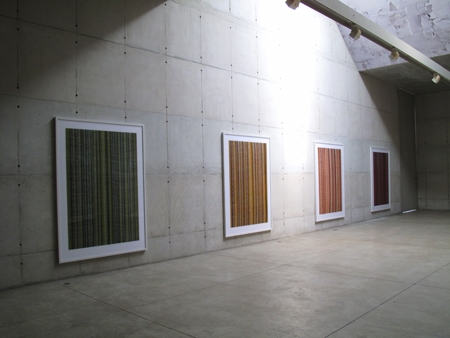Galeria Leme is delighted to present the first solo show by the German artist Frank Thiel in Brazil.
Thiel is best known for his almost twenty-years preoccupation with the architectural, social, political and cultural transformation of the post-wall Berlin. Thiel’s works have become an integral part of the unfolding history of the city and probably its most important photographic record. Due to his ability to inscribe the dialectic relationship between ideology and aesthetics in his photographs Thiel’s work uniquely describes the formation of a new political space within urban structures and the resulting works do always seem to refer to a larger narrative context. The Artist prefers the process of construction over the end result, and persistently pursues the aesthetics of temporality and change. This architecture in transition is Thiel’s real subject matter – the incomplete.
Over the years Thiel’s work has more and more moved away from the macro vision, the overview of the city, to the micro vision, the details. He continuously extended his photographic repertoire and the often abstract, almost painterly character of the later works brilliantly explores the relationship between painting, photography and sculpture and charges his images with new references beside their strong socio-political context.
The selection of works for the artist’s first exhibition at Galeria Leme was first and foremost the result of Thiel’s engagement with Paulo Mendes da Rocha’s architecture of the gallery.
He has chosen 7 photographs of his most recent series for which he collected curtains from abandoned industrial and governmental buildings in East Berlin, where they had remained for the last 20 and more years, becoming mute witnesses to the decline of East Berlin’s industrial sector and the disappearance of its political system. The curtains, removed from their original setting, were archived, steam-ironed and photographed in a studio. By hanging them in front of windows during daylight, Thiel recreated the atmosphere of the original sites. The artist painstakingly arranged the fabrics into rigid folds, working against the limitations of the inherent pliable nature of the materials. The monumental photographs, enlarged to three times life size, take on an abstract character as a result of the carefully manipulated fabrics, detaching them further from the original subject matter.
The softness of the fabrics interestingly contrasts to the hardness of the concrete gallery walls and the meticulous folds of the curtains and the way of hanging them in the gallery space do correspond with the rigor of the grid of da Rocha’s architecture. Additionally Thiel does position an image on one end of the gallery that shows an interior of an abandoned building where the curtains could be from with an almost blind window. Thus the windowless gallery space seemingly opens towards the outside and the visitor gets a better understanding of the context of the whole exhibition.One of the gallery ceilings will be completely covered by an earlier photograph of Frank Thiel that shows paint peeling of a weathered ceiling in an abandoned East Berlin building. Kind of a „metaphor of modernism’s continuing decline“ (Robert Hobbs in Marking Time: Frank Thiel’s Photographs in Frank Thiel – A Berlin Decade 1995-2005) and a high contrast to the seemingly indestructible perfection of the concrete that is a metaphor for this modernism.
Frank Thiel was born in Kleinmanchnow, Germany in 1966 and lives in Berlin. Thiel has exhibited extensively in museums and galleries worldwide including the Portland Art Museum, USA; the Austin Museum of Art, USA; the Phoenix Art Museum, USA; the Bass Museum of Art in Miami, USA; the P.S.1 Contemporary Art Center in New York, USA; the National Gallery of Canada in Ottawa; the Art Gallery of Ontario in Toronto, Canada; the Museo Nacional Centro de Arte Reina Sofía in Madrid, Spain; the Moderna Museet in Stockholm, Sweden; the Mori Art Museum in Tokyo, Japan; the Fotomuseum Winterthur, Switzerland; the Centro Galego de Arte Contemporánea in Santiago de Compostela, Spain; the Centre National de la Photographie Paris, France; the Museo Jacobo Borges in Caracas, Venezuela; the Neue Nationalgalerie in Berlin, Germany; and the Hamburger Bahnhof in Berlin. In Brazil his works have been shown at the XXV. Bienal de São Paulo, the Museu de Arte Moderna, Rio de Janeiro, the SESC Paulista, São Paulo, the IV. Bienal de Artes Visuais do Mercosul, Porto Alegre, the Centro Cultural Banco do Brasil, Brasília, the Centro Cultural Oi Futuro, Rio de Janeiro and the SESC Pompéia, São Paulo. Thiel has been invited to various international biennales like the 48th Biennale of Venice, Italy, the 14th Biennale of Sydney, Australia, the 2nd Biennale of Valencia, Spain and the 49th October Salon in Belgrade, Serbia.
